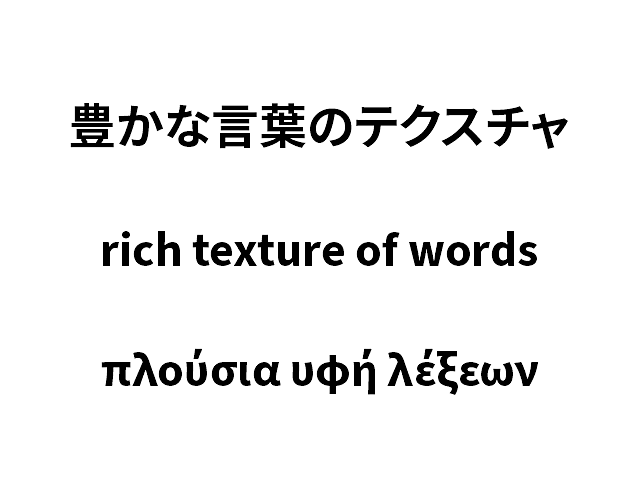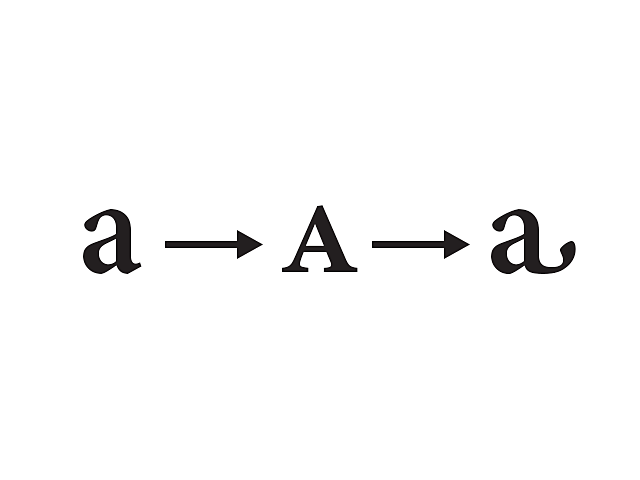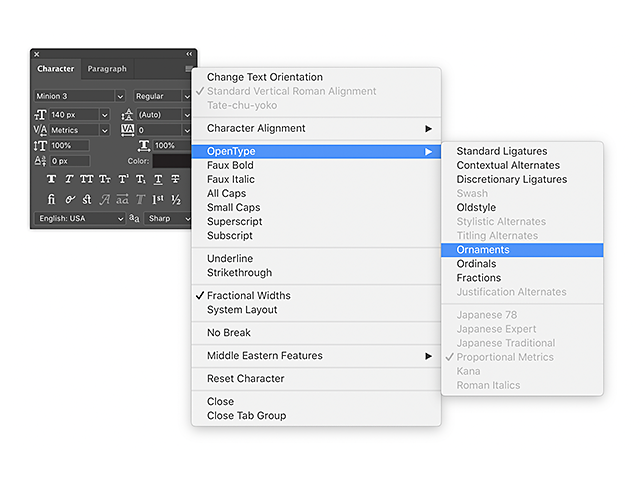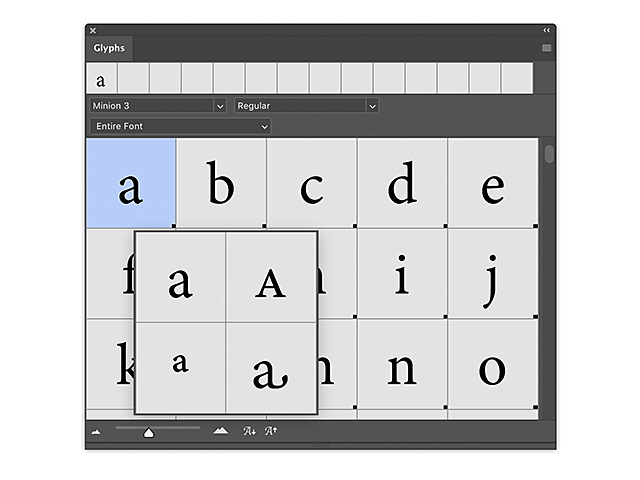OpenType® is a cross-platform font file format developed jointly by Adobe and Microsoft. Adobe has converted the entire Adobe Type Library into this format and now offers thousands of OpenType fonts.
The two main benefits of the OpenType format are its cross-platform compatibility (the same font file works on Macintosh and Windows computers), and its ability to support widely expanded character sets and layout features, which provide richer linguistic support and advanced typographic control.
The OpenType format is an extension of the TrueType SFNT format that also can support Adobe® PostScript® font data and new typographic features. OpenType fonts containing PostScript data, such as those in the Adobe Type Library, have an .otf suffix in the font file name, while TrueType-based OpenType fonts have a .ttf file name suffix.
OpenType fonts include an expanded character set and typographic layout features, providing broader linguistic support and more precise typographic control.
Better language support
Based on Unicode, the international encoding standard that covers virtually all of the world's languages, OpenType fonts make multilingual typography easier.

Advanced typography
OpenType fonts may contain more than 65,000 glyphs, which allows a single font file to contain many alternate glyphs, such as old-style figures, small capitals, fractions, swashes, superiors, inferiors, titling letters, contextual and stylistic alternates, and a full range of ligatures.
Historically, some of the highest quality typefaces have included different designs for different print sizes. Several of Adobe's OpenType fonts include optical size variations such as: caption, regular, subhead and display. Called “Opticals,”these variations have been optimized for use at specific point sizes. Although the exact intended sizes vary by family, the general size ranges include: caption (6-8 point), regular (9-13 point), subhead (14-24 point) and display (25-72 point).

Because of the limitations of previous font technologies, support for expert character sets and multiple languages required separate font files. OpenType fonts provide far more typographic capabilities by combining base character sets, expert sets, and extensive additional glyphs into one file.
OpenType feature support
Central to a discussion of OpenType feature support lies the distinction between characters and glyphs. Characters are the code points assigned by the Unicode standard, which represent the smallest semantic units of language, such as letters. Glyphs are the specific forms that those characters can take. One character may correspond to several glyphs; the lowercase “a,” a small cap “a” and an alternate swash lowercase “a” are all the same character, but they are three separate glyphs. One glyph can also represent multiple characters, as in the case of the “ffi” ligature, which corresponds to a sequence of three characters: f, f and i.
OpenType layout features can be used to position or substitute glyphs. For any character, there is a default glyph and positioning behavior. The application of layout features to one or more characters may change the positioning, or substitute a different glyph. For example, the application of the small capitals feature to the “a” would substitute the small cap “a” glyph for the usual lowercase “a” glyph. To access alternate glyphs in an OpenType font, an application provides a user interface that allows end users to apply OpenType layout features to text.

The lowercase “a” character can be represented by multiple glyphs in an OpenType font.
OpenType and Adobe applications
Most macOS and Windows applications are compatible with OpenType. Adobe InDesign® still is an exemplary application to provide advanced OpenType feature support. With InDesign, you can turn on OpenType layout features that automatically substitute alternate glyphs in an OpenType font. Many of these OpenType layout features, such as automatic ligatures, small capitals, swashes and old-style figures, are accessed through the OpenType pop-up menu on the Character palette in Photoshop. In addition, any alternate glyphs in OpenType fonts may be selected manually via the Insert Glyph palette.

Adobe Photoshop lets you automatically substitute the ligatures and old-style figures of an OpenType font into your document simply by selecting the appropriate character menu item.

Adobe Photoshop lets you select and insert any alternate glyph of an OpenType font using the Insert Glyph palette.